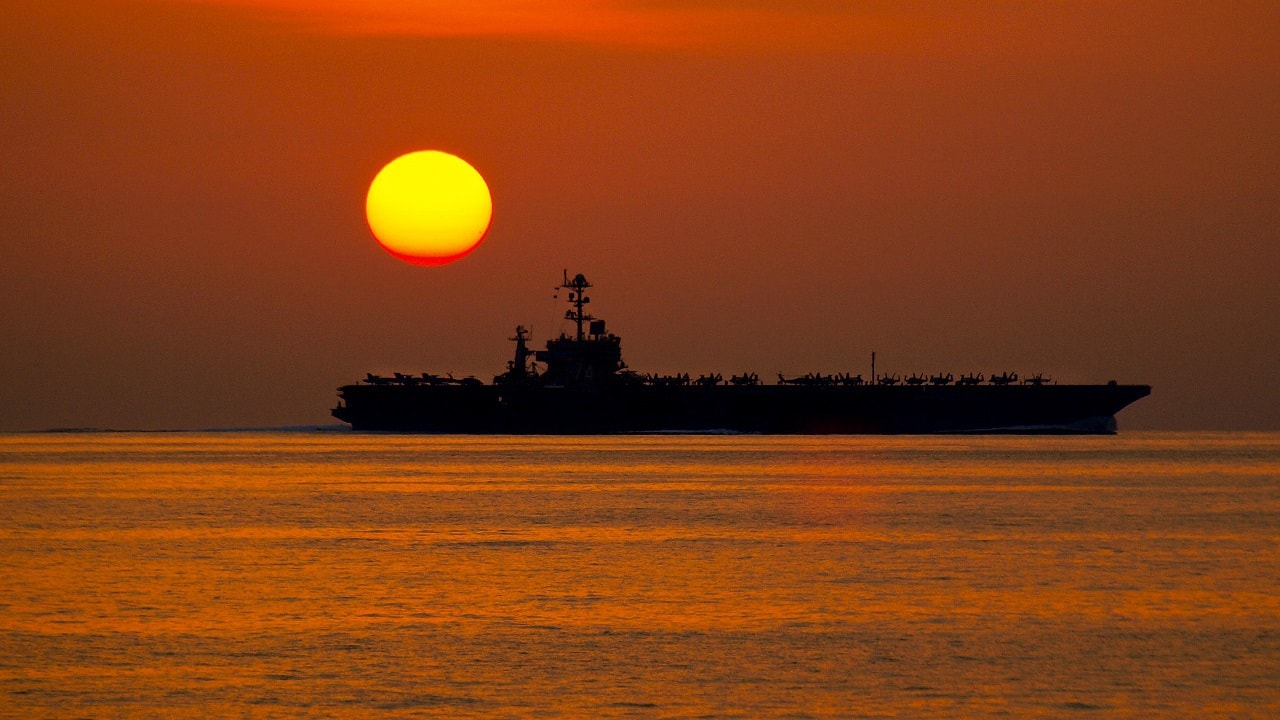As the USS Ford aircraft carrier blasts onto the scene for its first deployment, many may be inclined to overlook the future prospects of the still-deployed Nimitz-class carriers.
While going back decades since their inception, Nimitz-class carriers have consistently been upgraded as part of a Navy effort to keep pace with a fast-evolving threat environment. The ships have continued to receive upgraded weapons, improved layered defenses, and key adaptations to accommodate new platforms such as the F-35C.
Precision Landing
One such improvement to Nimitz carriers is a cutting-edge GPS-enabled aircraft carrier landing system called Joint Precision Approach and Landing System.
Navy fighter jets have for decades been skilled in the art of landing a fighter jet on a carrier under enemy fire or in dangerous weather conditions, and JPALs is intended to better enable these efforts by introducing a new measure of precision and guidance technology to pilots landing on moving carriers.
Pilots bank at an almost 90-degree angle before approaching a “glide slope” and maintaining correct accuracy and steadiness as they descend upon a carrier deck watching the fresnel lens guide them to making the correct adjustments.
JPALs is part of a series of enhancements built into the Nimitz class to better accommodate and support the arrival of the F-35C, a first-of-its-kind carrier-launched stealth fighter.
Improving the Nimitz class ability to project power with the F-35C is a critical part of a broader effort to “ruggedize” carriers for a higher-threat maritime warfare environment.
Ruggedizing Nimitz for Future War
This ruggedizing has also in recent years included ongoing technological upgrades of layered ship defenses to include the addition of new electronic warfare (EW) countermeasures, interceptor weapons, and computing.
Perhaps the most significant element of improved survivability resides in an increased ability to network with other ships within a Carrier Strike Group and conduct multi-domain networking such that air platforms, surface ships, and unmanned systems can all coordinate information with one another in real-time.
Advances in command and control have likely been integrated to accommodate communications technologies necessary to share data with F-35Cs as well as MQ-25 Stingray unmanned, carrier-launched refueler drones.
Aircraft Carrier Competition?
As for the question of whether upgraded Nimitz-class carriers will compete with or rival the Ford class, there are a number of key variables to consider.
It seems Nimitz would perform quite well alongside the Ford class.
Yet, the greatest difference relates to Ford’s 33-percent greater sortie rate enabled by a larger deck and large megawatt generators able to provide unprecedented amounts of onboard electrical power.
This can help store energy and also power up and sustain power-reliant emerging weapons systems such as lasers, new EW applications, and radar and fire control systems.
MORE: Zumwalt – The Navy’s Stealth Destroyer Firing Hypersonic Missiles?
MORE: Could the U.S. Navy Bring Back Battleships?
Kris Osborn is the Military Affairs Editor of 19FortyFive and President of Warrior Maven – Center for Military Modernization. Osborn previously served at the Pentagon as a Highly Qualified Expert with the Office of the Assistant Secretary of the Army—Acquisition, Logistics & Technology. Osborn has also worked as an anchor and on-air military specialist at national TV networks. He has appeared as a guest military expert on Fox News, MSNBC, The Military Channel, and The History Channel. He also has a Masters Degree in Comparative Literature from Columbia University

